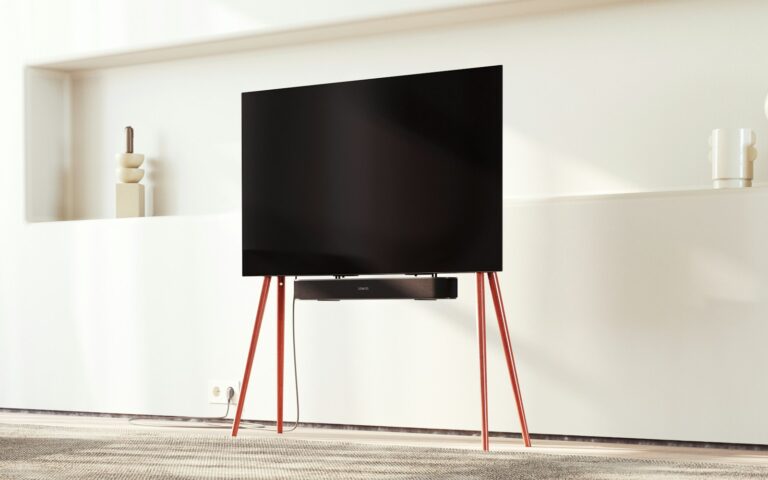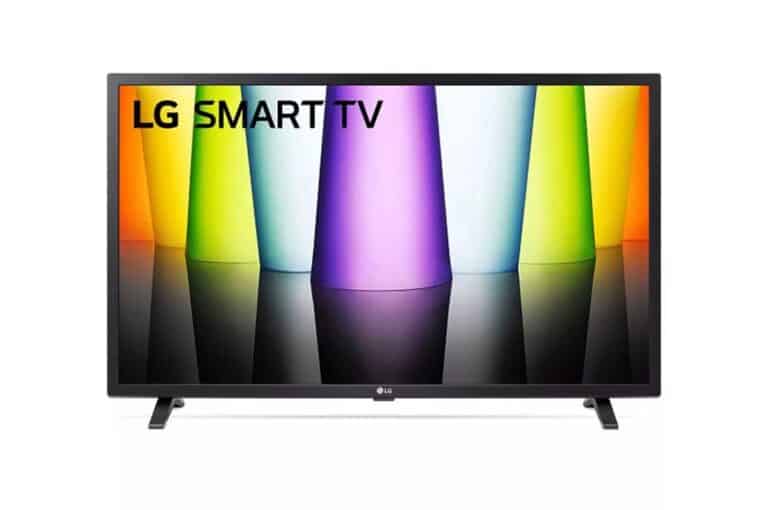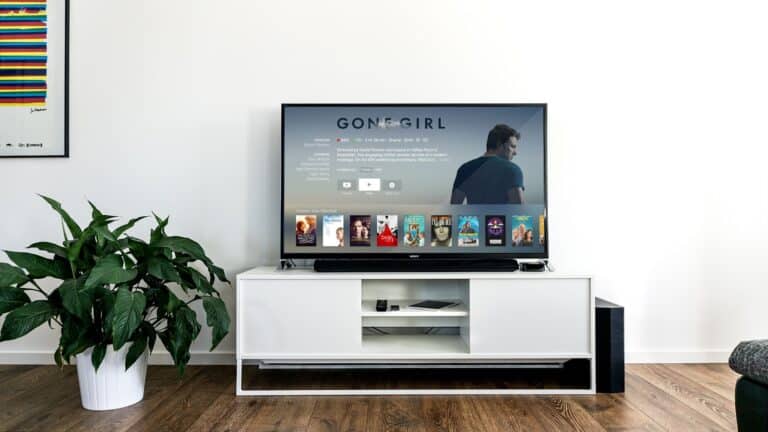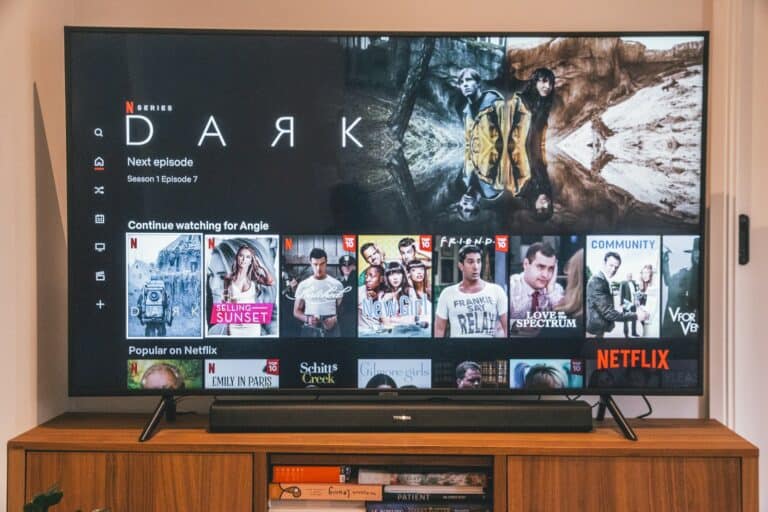
Is your smart TV taking forever to load apps or respond to your remote? You’re not alone. Many smart TV owners face frustrating delays when using their devices. Slow performance in smart TVs often stems from limited processing power, background processes, outdated software, or network connection issues that affect the user experience.
When a smart TV struggles to keep up with your commands, it can ruin your viewing experience. The same TV that worked perfectly when you first bought it may now take ages to load Netflix or switch between apps. This slowdown happens because smart TVs typically have less powerful processors than smartphones or computers, yet they’re running increasingly complex software and services.
🐢 Why Is My Smart TV So Slow? (And How to Fix It)
If your Smart TV is lagging, freezing, or taking forever to load apps like Netflix, YouTube, or Prime Video, you’re not alone. Slow performance is a common problem—and thankfully, there are several ways to speed things up.
Here’s a breakdown of why your Smart TV might be slow and what you can do about it.
⚙️ Common Reasons Your Smart TV Is Running Slowly
1. Too Many Background Apps
Smart TVs, like smartphones, have limited RAM. If too many apps are open or cached, your TV can start to lag.
Fix:
- Close unused apps.
- Restart the TV to clear the memory.
- On some TVs, go to Settings > Apps > Running Apps and manually force-stop the ones you’re not using.
2. Outdated Software
Old firmware can cause lag, bugs, and app crashes.
Fix:
- Check for updates:
Go to Settings > Support > Software Update (Samsung) or your brand’s equivalent. - Update your apps too, especially streaming ones.
3. Slow Internet Connection
A sluggish Wi-Fi signal can make your TV feel slow when streaming, loading apps, or browsing menus.
Fix:
- Move your router closer or use a Wi-Fi extender.
- Use an Ethernet cable for faster, more stable connection.
- Test your internet speed. Aim for at least 10 Mbps per device for smooth streaming.
4. TV Storage Is Full
Some Smart TVs store app data, cached files, and downloads. When storage is maxed out, performance suffers.
Fix:
- Delete unused apps.
- Clear app cache and data:
(e.g., Settings > Apps > [App] > Clear Cache) - Reset the TV if needed.
5. Too Many Connected Devices
A crowded home network can slow your TV down if bandwidth is being eaten up by phones, tablets, or game consoles.
Fix:
- Disconnect unused devices.
- Upgrade your router to handle more devices or switch to a mesh system.
6. Low-End Hardware
Some Smart TVs just don’t have fast processors or enough RAM, especially budget models or older TVs.
Fix:
- Consider using a streaming stick (like Roku, Fire TV, or Apple TV), which usually offers smoother performance.
- Avoid heavy multitasking (e.g., multiple apps at once).
7. Glitchy or Poorly Optimized Apps
Some apps are just poorly built or not optimized for your TV model.
Fix:
- Try uninstalling and reinstalling the app.
- If an app is consistently laggy, use a different platform (e.g., stream via a Chromecast or external device).
🔄 Bonus Fix: Factory Reset (Use as Last Resort)
If nothing else works, a factory reset can wipe everything and bring your TV back to a clean state.
Where to find it:
- Samsung: Settings > General > Reset
- LG: Settings > All Settings > General > Reset to Initial Settings
- Sony: Settings > Device Preferences > Reset
- Vizio: Menu > System > Reset & Admin
Sure! Here are brand-specific troubleshooting guides you can paste directly under your main article to help users fix slow Smart TVs by brand:
📺 Samsung Smart TV Running Slow – How to Speed It Up
- Cold Boot the TV
- Hold the power button on your remote for 5–10 seconds until the TV restarts.
- This clears RAM and stops background apps.
- Clear App Cache
- Go to Settings > Support > Device Care > Manage Storage
- Select apps and choose Clear Cache or Delete unused ones.
- Update Firmware
- Settings > Support > Software Update > Update Now
- Turn Off Auto-Start Features
- Disable Autorun Last App and Autorun Smart Hub under
Settings > General > Smart Features
- Disable Autorun Last App and Autorun Smart Hub under
- Factory Reset (if needed)
- Settings > General > Reset
- Enter your PIN (default: 0000)
📺 LG Smart TV Slow Response – Try These Fixes
- Turn Off Quick Start+
- Go to Settings > All Settings > General > Quick Start+
- Set it to OFF. Then restart your TV.
- Clear Cache or Reinstall Apps
- Settings > Apps > Select App > Clear Cache / Data
- Or uninstall unused apps from App Manager
- Update Software
- Settings > All Settings > Support > Software Update > Check for Updates
- Check Storage
- If your model shows storage info, free up space by deleting unused apps and media.
- Factory Reset
- Settings > All Settings > General > Reset to Initial Settings
📺 Vizio Smart TV Is Lagging – Here’s What to Do
- Power Cycle the TV
- Unplug the TV from the wall for 1 minute
- Hold the power button on the TV (not remote) for 10 seconds before plugging it back in.
- Check Internet Speed
- Use the built-in speed test:
Menu > Network > Test Connection - Use Ethernet if Wi-Fi is weak.
- Use the built-in speed test:
- Turn Off “Smart Interactivity”
- Menu > System > Reset & Admin > Viewing Data → Turn Off
- Update the TV
- Menu > System > Check for Updates
- Factory Reset
- Menu > System > Reset & Admin > Reset TV to Factory Defaults
📺 Sony Android/Google TV Lag Fix Guide
- Restart the TV
- Hold the power button on the remote until it reboots.
- Free Up RAM
- Go to Settings > Apps > See All Apps
- Select apps you’re not using and click Force Stop or Clear Cache
- Update Software
- Settings > System > About > System Update
- Disable Animation Scaling (Advanced)
- Turn on Developer Options:
Settings > Device Preferences > About > Build → Press 7x to enable. - Then go to Developer Options > Animation Scale and reduce all values to 0.5x or off.
- Turn on Developer Options:
- Factory Reset
- Settings > Device Preferences > Reset > Factory Data Reset
📺 TCL Roku TV Slow Performance – Speed It Up
- Restart the TV
- Settings > System > Power > System Restart
- Clear Cache via Remote
- Press the following buttons in order on your remote:
Home (×5), Up (×1), Rewind (×2), Fast Forward (×2) - This clears the cache and improves performance.
- Press the following buttons in order on your remote:
- Remove Unused Channels
- Highlight channel > Press * (star) button > Select Remove Channel
- Update the System
- Settings > System > System Update
- Factory Reset
- Settings > System > Advanced System Settings > Factory Reset
Key Takeaways
- Smart TVs often slow down due to overloaded storage, outdated software, or poor internet connections.
- Regularly clearing your TV’s cache and removing unused apps can significantly improve performance.
- External streaming devices typically offer faster performance than built-in smart TV platforms due to their more powerful processors.
Diagnosing Performance Issues
Smart TV performance problems can be identified through systematic troubleshooting. By checking specific areas of functionality, users can pinpoint what’s causing their device to lag or respond slowly.
Assessing Internet Connection Speed
A slow internet connection is often the main culprit behind a sluggish smart TV experience. Users should first test their connection speed using built-in TV diagnostic tools or a separate device on the same network.
Most streaming services require at least 5-10 Mbps for HD content and 25+ Mbps for 4K viewing. If speeds fall below these thresholds, the TV will struggle to load content smoothly.
Wi-Fi signal interference can significantly impact performance. TVs located far from routers or separated by walls may experience signal degradation. Network issues can cause buffering and slow menu navigation.
Consider connecting the TV directly to the router via Ethernet for the most stable connection. This bypasses Wi-Fi limitations and often resolves streaming issues immediately.
Evaluating Smart TV Specifications
The hardware inside a smart TV greatly affects its performance capabilities. Older models typically have less RAM and slower processors, making them feel sluggish compared to newer versions.
Common TV Specifications That Impact Performance:
- RAM: 1-2GB (budget models), 3-4GB (premium models)
- Processor: Single-core (slow), Quad-core (faster)
- Storage: 4-8GB (limited), 16GB+ (better for apps)
Different brands handle resources differently. Samsung TVs and LG TVs generally offer better optimization than budget alternatives. Roku TV, while user-friendly, can become overtaxed when too many apps are installed.
The age of the device matters significantly. A TV that performed well five years ago may struggle with today’s more demanding apps and higher-resolution content.
Reasons for a Slow Smart TV
Several common factors contribute to performance degradation in smart TVs. Accumulated cache data is a leading cause of slowdowns, as temporary files build up over time and consume system resources.
Clearing the cache can significantly improve responsiveness. This process varies by manufacturer but is typically found in the storage or applications settings menu.
Outdated software creates compatibility issues with newer apps and services. Many users neglect firmware updates, which often contain performance optimizations and bug fixes.
Signs Your TV Needs Attention:
- Menus take several seconds to respond
- Apps crash frequently
- Loading icons appear constantly
- Voice commands process slowly
Overloaded storage from too many installed apps forces the system to work harder. Removing unused applications frees up resources and improves overall performance.
Background processes like automatic content suggestions and system maintenance can consume processing power silently. Disabling these features often yields noticeable improvements.
Enhancing Smart TV Performance
Smart TVs often slow down over time due to various factors that can be addressed through proper maintenance and strategic hardware choices. Most performance issues can be resolved without replacing the entire TV.
Routine Maintenance and Firmware Updates
Regular system maintenance is crucial for keeping your smart TV running smoothly. Rebooting your TV weekly helps clear temporary memory and resolve minor glitches. To properly reboot, unplug your TV from the wall outlet for at least 60 seconds before plugging it back in. This simple step forces the system to completely shut down and restart.
Firmware updates are essential for optimal performance. TV manufacturers regularly release updates that fix bugs and improve functionality. Most modern TVs update automatically when connected to the internet, but it’s worth checking manually in your settings menu every few months.
Delete unused apps to free up valuable system resources. Smart TVs have limited storage and processing power, so keeping only essential apps installed helps maintain speed. Clear cached data regularly through your TV’s settings menu to prevent slowdowns.
Improving Connectivity and Streaming
A slow internet connection is often the culprit behind poor streaming performance. Position your router closer to your TV or consider using a mesh network system for better coverage throughout your home.
Consider these connection options for improved performance:
- Wired ethernet connection (fastest and most reliable)
- 5GHz Wi-Fi band (faster but shorter range)
- 2.4GHz Wi-Fi band (slower but better range)
External streaming devices often outperform built-in smart TV platforms. Options like Apple TV, Chromecast with Google TV, or Roku provide faster interfaces and more frequent updates. Simply connect these devices to an available HDMI input on your TV.
Check your TV’s settings for power-saving modes that might be throttling performance. These modes can reduce processing power to conserve energy.
Advanced Troubleshooting
When basic maintenance doesn’t resolve performance issues, more advanced solutions may be necessary. Clearing your TV’s cache can significantly improve response times. This option is typically found in the storage or system settings menu.
For persistent issues, a factory reset might be necessary. This will erase all personal settings and installed apps, returning the TV to its original state. Before proceeding, note your Wi-Fi credentials and any custom settings you’ll need to restore.
For TVs with specific platforms like SmartCast, check the manufacturer’s support website for model-specific troubleshooting steps. Some TVs benefit from specialized maintenance procedures not covered in general guides.
If your TV is more than 5-6 years old, performance limitations may be hardware-related. Older models have less powerful processors and limited memory compared to newer options.
Frequently Asked Questions
Smart TV users often encounter performance issues that can be frustrating during everyday use. These common problems typically have straightforward solutions that don’t require technical expertise.
What are common causes for slow performance on Smart TVs?
Several factors can contribute to a sluggish Smart TV experience. A slow or poor internet connection is often the primary culprit behind laggy performance.
Having too many devices connected to your network can also significantly reduce available bandwidth for your TV. This creates competition for resources and slows down streaming and app loading.
Running multiple apps simultaneously on your Smart TV can overwhelm its processor. Many Smart TVs have limited processing power compared to computers or smartphones.
How can one effectively clear the cache on a Smart TV to improve its speed?
Clearing the cache is one of the most effective ways to improve a lagging TV. The process varies by brand, but generally can be found in the storage or apps section of the settings menu.
For most TVs, users should navigate to Settings, then find Application Manager or Storage. From there, select the app causing issues and choose “Clear Cache” option.
This process removes temporary files that accumulate over time and can significantly improve performance without deleting important data like login credentials.
What steps can be taken to enhance the overall speed of a Smart TV?
Regularly updating the TV’s firmware is essential for optimal performance. Outdated software can cause compatibility issues with newer apps and services.
Users should restart their Smart TV periodically to clear temporary memory. This simple step can resolve many performance issues by refreshing system resources.
Removing unused apps helps prevent storage overload, which can dramatically slow down TV operation. Most Smart TVs have limited storage capacity compared to other devices.
In what ways can lag issues be resolved when watching content on a Smart TV?
Switching to a wired Ethernet connection instead of Wi-Fi can provide more stable internet connectivity. This eliminates wireless interference that often causes buffering during streaming.
Lowering video quality settings in streaming apps can reduce buffering on slower networks. Many services automatically adjust quality, but manual adjustment may be necessary for consistent playback.
Closing background apps not in use frees up system resources. Many users don’t realize that apps continue running in the background after being opened.
Why do some Smart TVs experience delayed responses to remote control inputs?
Signal interference from other electronic devices can disrupt remote control functionality. Moving devices like wireless speakers or routers away from the TV can help.
Low batteries in the remote control often cause delayed response times. This simple issue is frequently overlooked but easily remedied with fresh batteries.
Some Smart TVs have inherent slow response times due to processing limitations. Lower-end models typically have less powerful processors that struggle with complex operations.
Are there specific solutions for Samsung and LG Smart TVs that are slow to respond?
Samsung TVs benefit from disabling auto-updates in the settings menu. This prevents background update checks that can interrupt normal operation and cause slowdowns.
LG Smart TVs often perform better after enabling “Quick Start+” mode. This keeps essential systems running in standby, reducing boot-up and app launch times.
Both brands recommend periodically performing a factory reset if persistent slowdowns occur. Users should backup important settings before proceeding with this option.





